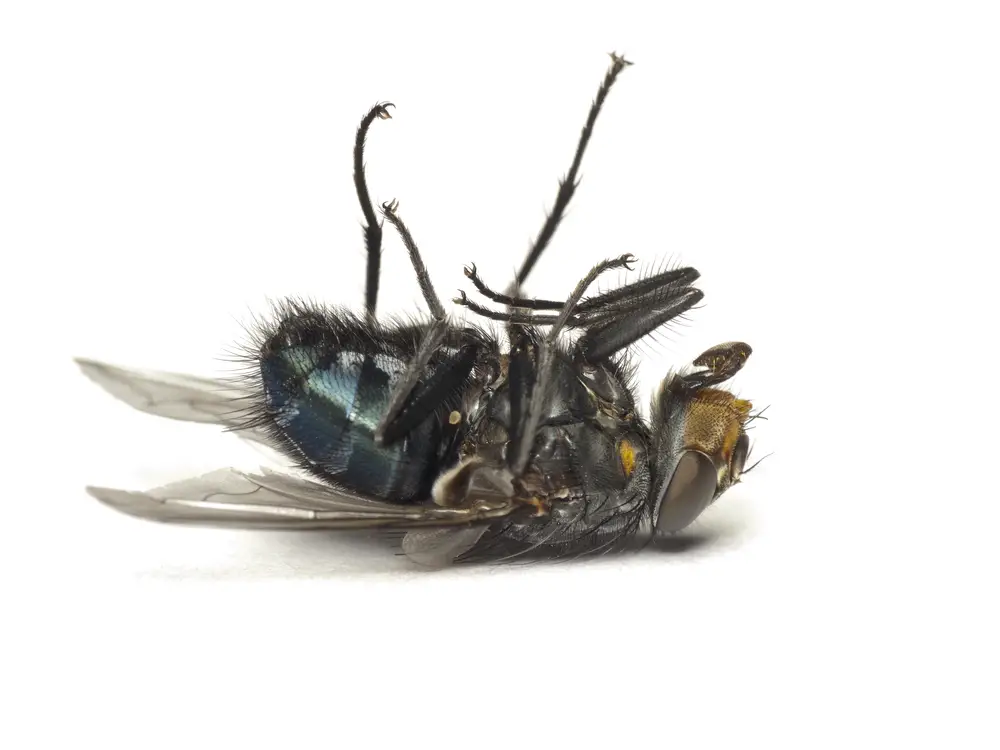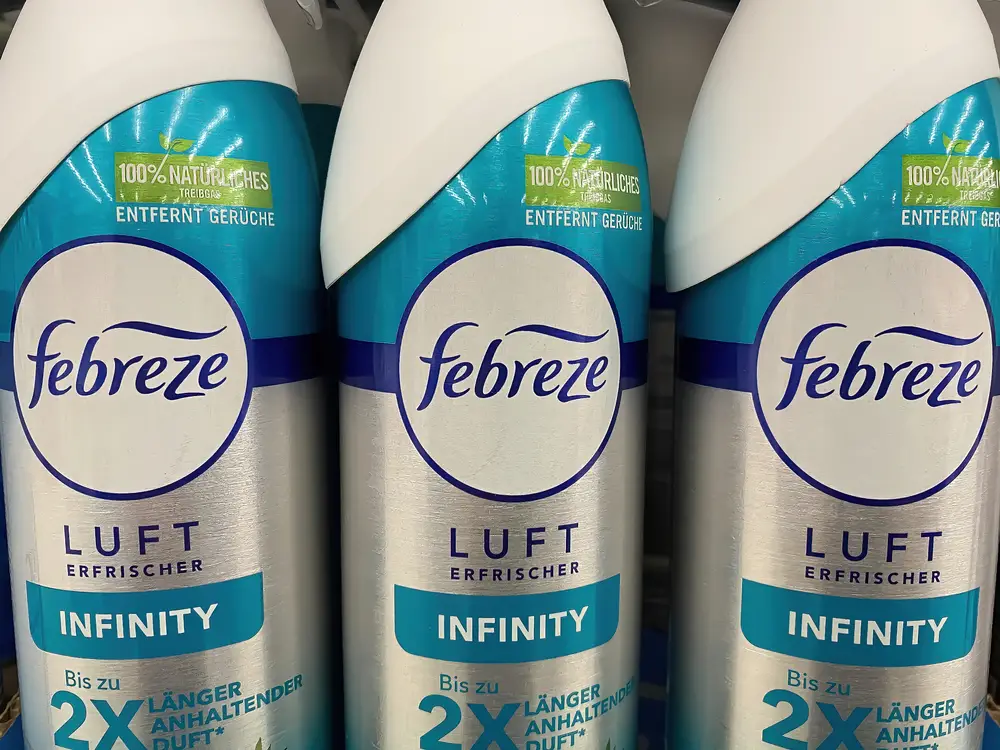Many of us have spent a warm summer day swatting at pesky flies that find their way indoors. Finding an effective solution to eliminate these bothersome insects is a perennial challenge.
One product that comes to mind is Febreze, a well-known air freshener that instantly eliminates odors and freshens the air.
Quick Answer:
Febreze is not designed to kill flies. It’s an air freshener that eliminates odors. While it may contain chemicals toxic to insects, Febreze is not marketed as an insecticide. To kill flies, use insecticides or fly control methods specifically designed for that purpose.
Scientific research and user experiences on this topic may help shed light on whether Febreze is indeed a weapon in our battle against these unwanted guests or if alternative methods remain the best course of action.
Does Febreze Kill Flies?
Febreze is a popular household air freshener, often used to neutralize and eliminate unpleasant odors in many homes. However, its potential to kill flies might not be as well-known.

Effectiveness of Febreze
Febreze is not specifically designed to kill insects, and its primary purpose is to deodorize and freshen up the environment. That being said, using Febreze on flies could potentially have a detrimental effect on them.
The chemicals in the air freshener might be fatal to flies when they come into direct contact with it.
Let’s take a look at how Febreze might work against flies:
- Suffocation: The main ingredients in Febreze, such as OdorClear technology and other compounds, work to eliminate odors by trapping them in small air pockets. When sprayed onto flies, these compounds may also be able to suffocate the insects by clogging their respiratory system.
- Irritation: Febreze contains various chemicals with a strong odorous effect capable of neutralizing bad smells. Flies rely on their sense of smell to navigate and search for food. The strong scent of Febreze might disorient and irritate flies, impacting their ability to survive.
- Toxicity: Some ingredients in Febreze have been shown to be toxic to certain insects. However, the toxicity levels are generally low, and while Febreze might cause some harm to flies, it is not formulated to be an insecticide.
Chemical Components of Febreze
Febreze is a popular odor-eliminating product, but can it kill flies? Let’s explore the chemical components that make up Febreze.
Active Ingredients
Cyclodextrin: This is a key ingredient in Febreze that helps eliminate odors. Cyclodextrins are derived from starch and form a ring-like structure, allowing them to trap and neutralize odor molecules. The most common type of cyclodextrin found in Febreze is hydroxypropyl beta-cyclodextrin.
Ethyl Acetate: This chemical compound is used as a solvent in Febreze, helping to dissolve other ingredients and create a homogeneous solution. Ethyl acetate is an organic compound, which evaporates quickly and has a sweet smell, contributing to the overall fragrance of the product.
Limonene: Derived from citrus fruits like oranges and lemons, limonene is a natural component used in the formulation of Febreze to provide its characteristic fresh scent. Limonene is used as a fragrance additive and can also act as a solvent, aiding in the delivery of other active ingredients.
In addition to these active ingredients, Febreze also contains other chemicals and fragrances that work together to eliminate bad odors and replace them with a pleasant scent.
Please note that while these chemicals work to effectively neutralize and mask odors, there is no solid evidence to suggest that Febreze can kill flies or has insecticidal properties.
Using Febreze Against Other Insects
- Doesn’t just mask, fights odors
- Febreze FABRIC (formerly Febreze Fabric Refresher) fights odors embedded in fabrics and other soft surfaces, leaving a light, fresh scent
- Perfect for hard-to-wash fabrics such as clothing, upholstery, carpets, and window treatments (DO NOT use on leather, suede, silk, or fabrics that may water spot)
Febreze is commonly used as an air freshener to eliminate unpleasant odors, but it can also be effective in repelling some insects. Let’s explore its effect on various common household pests.
Effect on Common Pests
- Ants: Febreze may help deter ants by masking the scent of their food sources. However, it is not a long-term solution and proper cleaning is essential to keep ants away.
- Spiders: Although Febreze may not kill spiders, it can help repel them as they don’t like the strong smell. It may also remove pheromones left by spiders, making them less likely to return.
- Gnats: Febreze can be used as a temporary solution to repel gnats. It may not kill them, but the strong odor can drive them away from the area.
- Bed bugs: Febreze is not likely to kill or repel bed bugs. It is essential to use professional insecticides and heat treatments to eliminate bed bug infestations.
- Fleas: Febreze might provide temporary relief from fleas, but it is not an effective long-term solution. Instead, use flea treatment products specifically designed for pets and household surfaces.
- Roaches and Cockroaches: While Febreze can potentially repel cockroaches because of its scent, it cannot kill them or address a larger infestation. Proper extermination methods and preventive measures are crucial to dealing with roaches.
- Mosquitoes and Flying Insects: Febreze’s scent may help repel mosquitoes and other flying insects to some extent. However, it’s not a proper substitute for repellents with active ingredients, such as DEET or picaridin.
- Mosquitos: Febreze can’t kill or repel mosquitoes effectively. It’s important to use dedicated repellents and avoid standing water to prevent mosquito breeding.
- Wasps: Febreze isn’t likely to kill or effectively repel wasps. Seek professional help to remove established wasp nests and use proper repellents to deter them.
- Stink bugs: Febreze may mask the odor released by stink bugs, but it cannot control their population or eliminate them. Sealing entry points in your home and using dedicated insecticides are essential for stink bug prevention.
Alternatives to Febreze for Insect Control
Natural Solutions
There are several natural solutions to help control insects, such as essential oils. Some popular essential oils for insect control include lemongrass, peppermint, eucalyptus, and cinnamon.
You can create your own bug spray by mixing a few drops of these oils with water in a spray bottle. Additionally, you can use vinegar or citrus-based solutions to repel insects.
Planting mint or pine plants in your garden or near your home can also help deter bugs, as these plants have natural insect-repelling properties.
Commercial Insecticides
Commercial insecticides are another alternative to Febreze for insect control. Some common household products, like Windex and hairspray, can be used as makeshift insecticides in a pinch but may not be as effective as dedicated bug sprays.
When shopping for commercial insecticides, look for products that are specifically formulated to target the insect species you’re trying to control.
Keep in mind that many commercial insecticides contain strong chemicals and pesticides, so be sure to follow the label directions carefully and use them responsibly.
Is Febreze Safe for Humans and Pets?
When it comes to using Febreze as an air freshener, it’s essential to know if it’s safe for both humans and pets.
Air Freshener Toxicity
Febreze is a popular air freshener that claims to eliminate odors by trapping them in its water-based formula.
The two primary ingredients in Febreze are cyclodextrin, a naturally occurring sugar molecule derived from corn starch, and beta-cyclodextrin, which is synthetically produced. These ingredients are relatively non-toxic and are generally safe for humans and pets in moderate amounts.
That being said, Febreze, like other air fresheners, does contain some chemical compounds that can cause irritation or allergy symptoms in some individuals when exposed to them over time.
These include:
- Fragrance: Used to provide a pleasant scent, these chemicals can cause respiratory or skin irritation, especially in those with pre-existing allergies or asthma.
- Propellants: These are used to help disperse the product into the air and may include chemicals such as butane, propane, and isobutane, which can be irritating to the lungs when inhaled in high quantities.
For pets, it’s crucial to use air fresheners like Febreze in a well-ventilated area and to ensure that the product does not come into direct contact with the pet or its belongings.
Cats, in particular, can be sensitive to certain compounds found in air fresheners, so it’s essential to keep an eye on them for any signs of distress or unusual behavior when using these products.
To minimize potential risks for both humans and pets, follow the instructions on the Febreze label and only use the recommended amounts. Additionally, ensure that there is proper ventilation in the room where the product is being used.
This will help to dissipate the air freshener more quickly and reduce the risk of irritation or other negative reactions.
Additional Uses for Febreze
- Doesn’t just mask, cleans away odors with OdorClear Technology
- Febreze AIR (formerly Febreze Air Effects) cleans away odors and freshens with a light, fresh scent that’s never overpowering
- Use Febreze AIR in entryways, bathrooms, laundry rooms, closets, or any room
Apart from its potential use against house flies, Febreze offers various other benefits to keep your space fresh and clean.
Odor Elimination
Febreze is well-known for its odor-elimination capabilities. With its unique formula containing a blend of water, ethanol, and various fragrances, it can effectively neutralize unpleasant smells on fabrics and in the air.
- Air fresheners: Febreze can be used as an air freshener to remove odors caused by pets, cigarette smoke, or cooking. It’s a convenient and affordable solution to keep your home smelling fresh without the need for constantly burning candles or incense.
- Fabrics: Febreze can be used on most types of fabrics, from furniture and curtains to clothing and bedding. It can help eliminate odors that tend to linger on these materials, ensuring a fresh-smelling living space.
- Plants: An interesting alternative use for Febreze is the spraying of diluted Febreze on plants to deter pesky insects like fruit flies and yellow jackets. Be cautious not to overdo it, as it might harm the plants.
Cleaning
While Febreze is primarily an odor eliminator, it can also assist in cleaning tasks, tackling some common household problems.
- Dust mites and moths: A light spray of Febreze on textiles such as carpets, upholstery, and bedding can help in reducing the presence of dust mites and moths. Regular application can assist in keeping these critters in check.
- Flea infestations: Febreze’s formula is not specifically designed to kill fleas, but anecdotal evidence suggests that it can help deter fleas when used on fabrics and furniture. However, a professional treatment should be sought in the case of severe infestations.
- Kitchen: Febreze can be used in the kitchen to neutralize cooking odors and to freshen up the dining area. Although it is not a substitute for regular cleaning, the product does provide an additional layer of freshness to a clean space.
- Insect repellent: Some users have found that Febreze can be an effective makeshift insect repellent. For example, lightly spraying outdoor furniture with Febreze during the warmer months may help deter flies and mosquitoes from landing on your patio.
Despite its numerous applications, remember that Febreze should not be ingested or used as a poison or bait for pests.
Always read the product label and use it as directed for safe and effective results.




